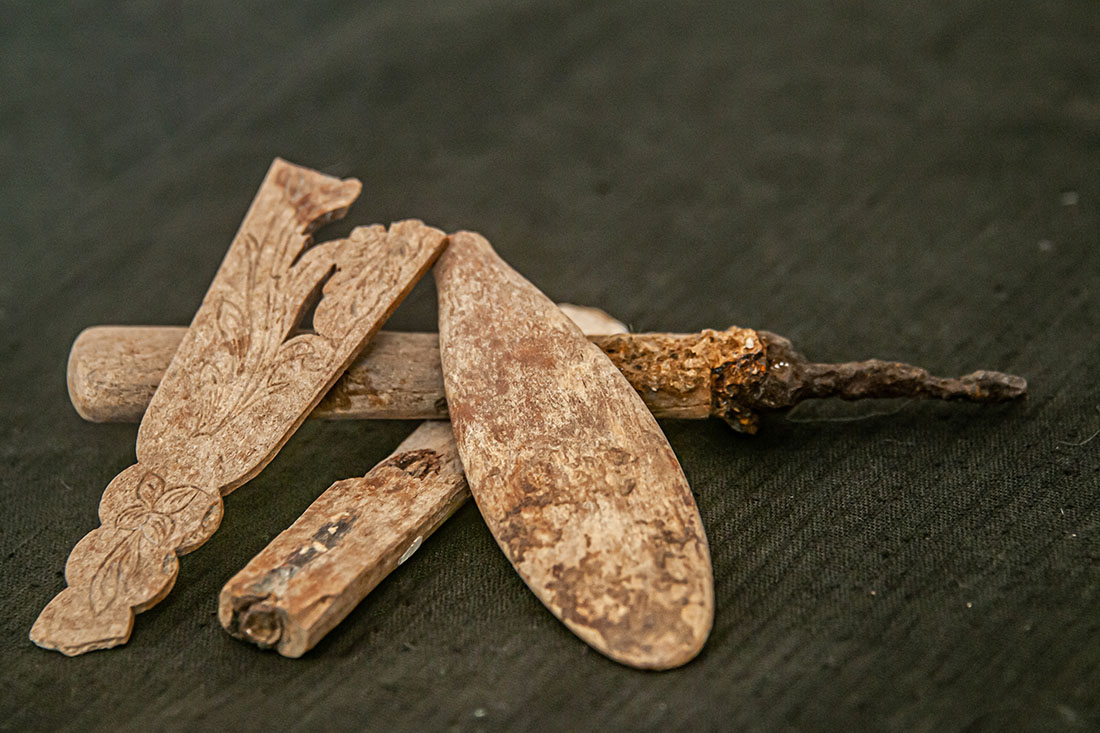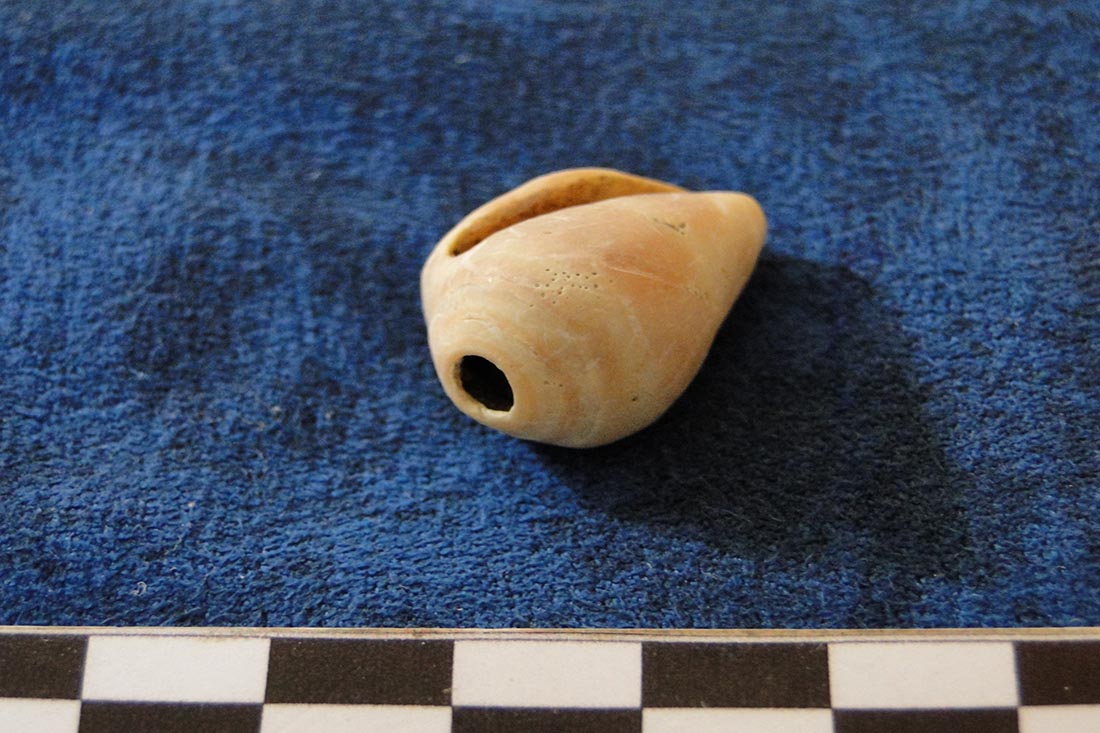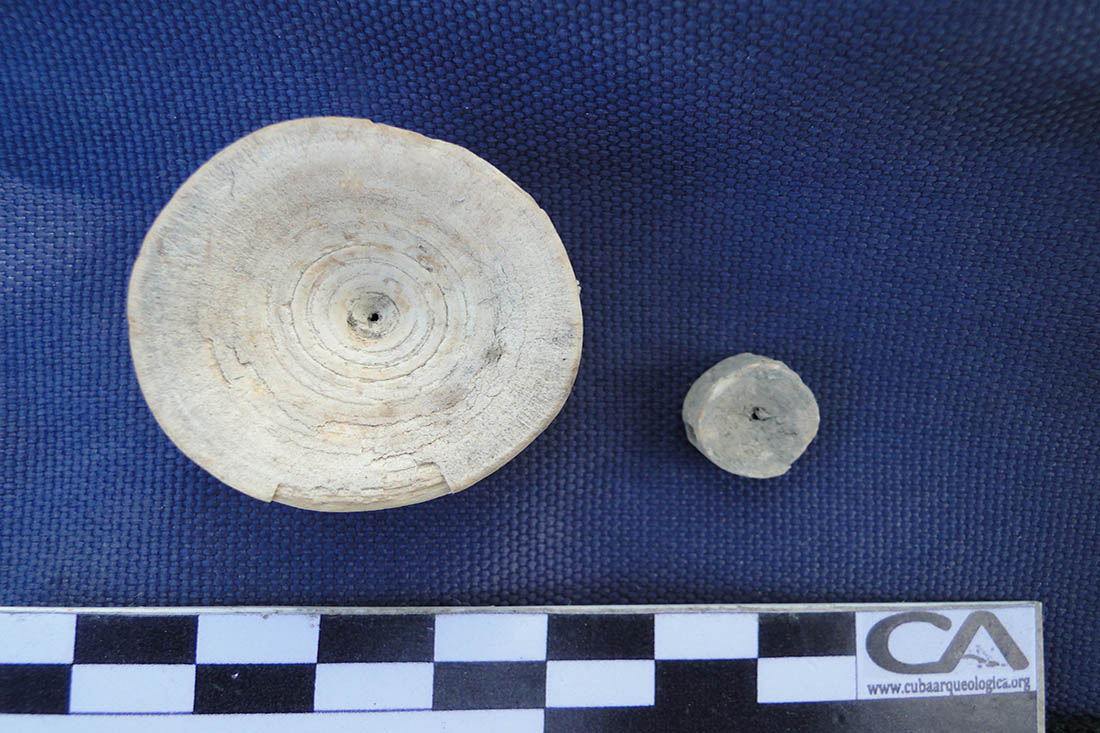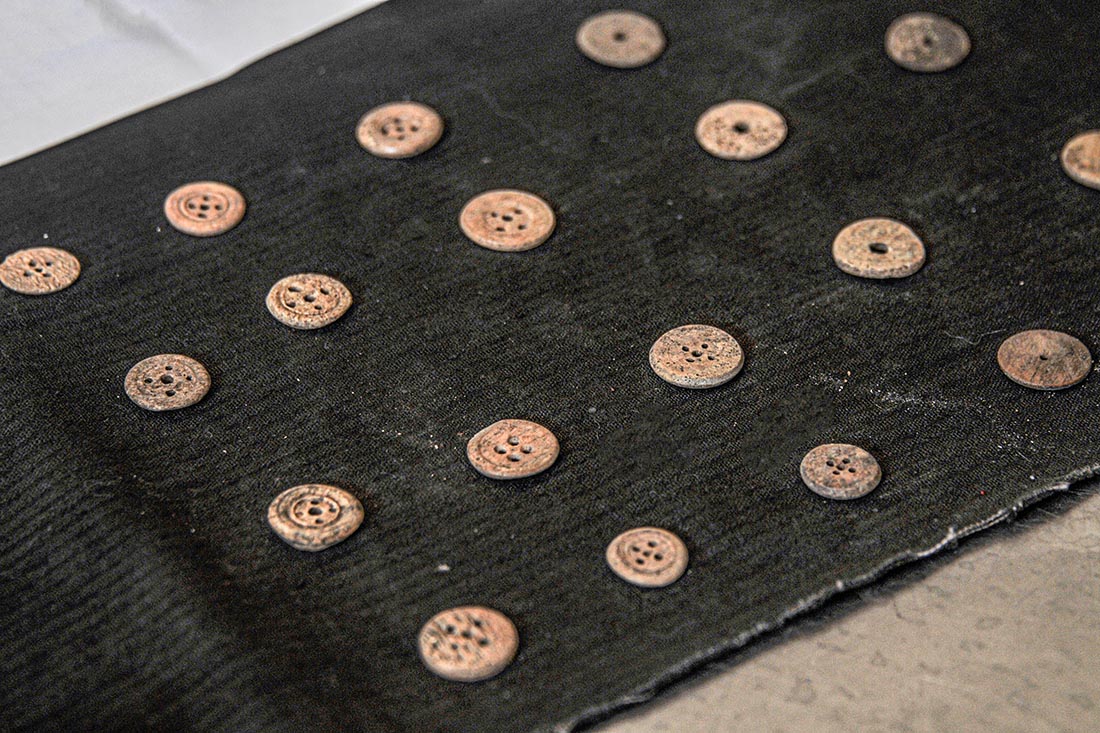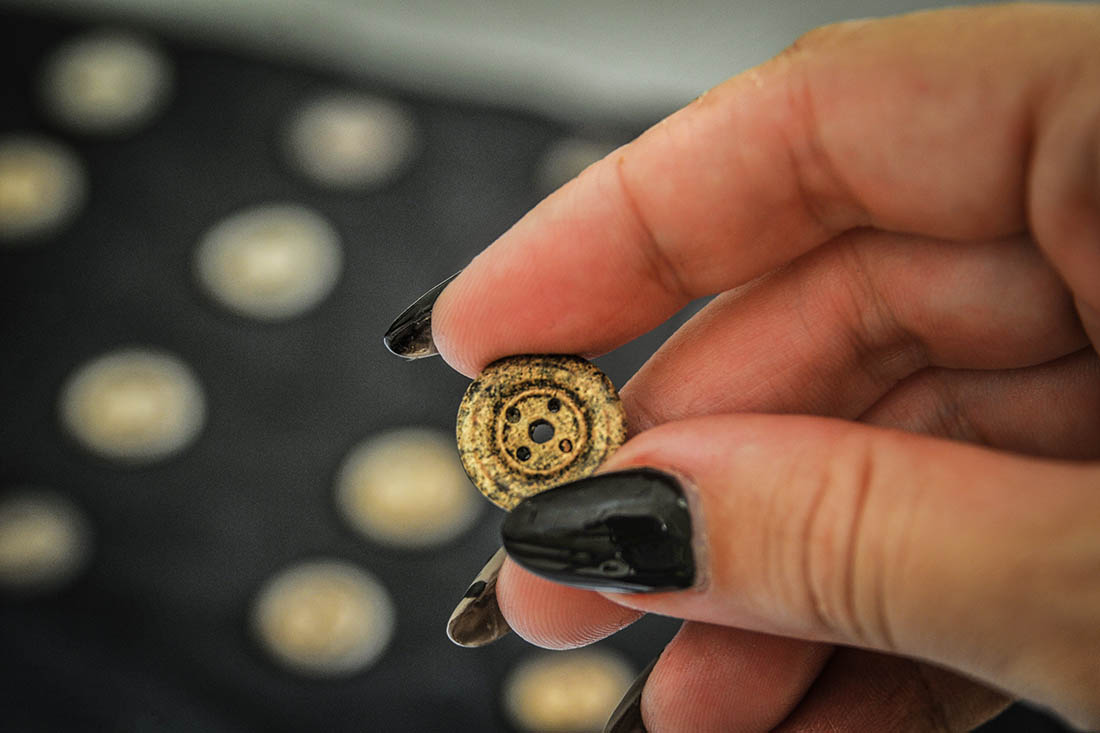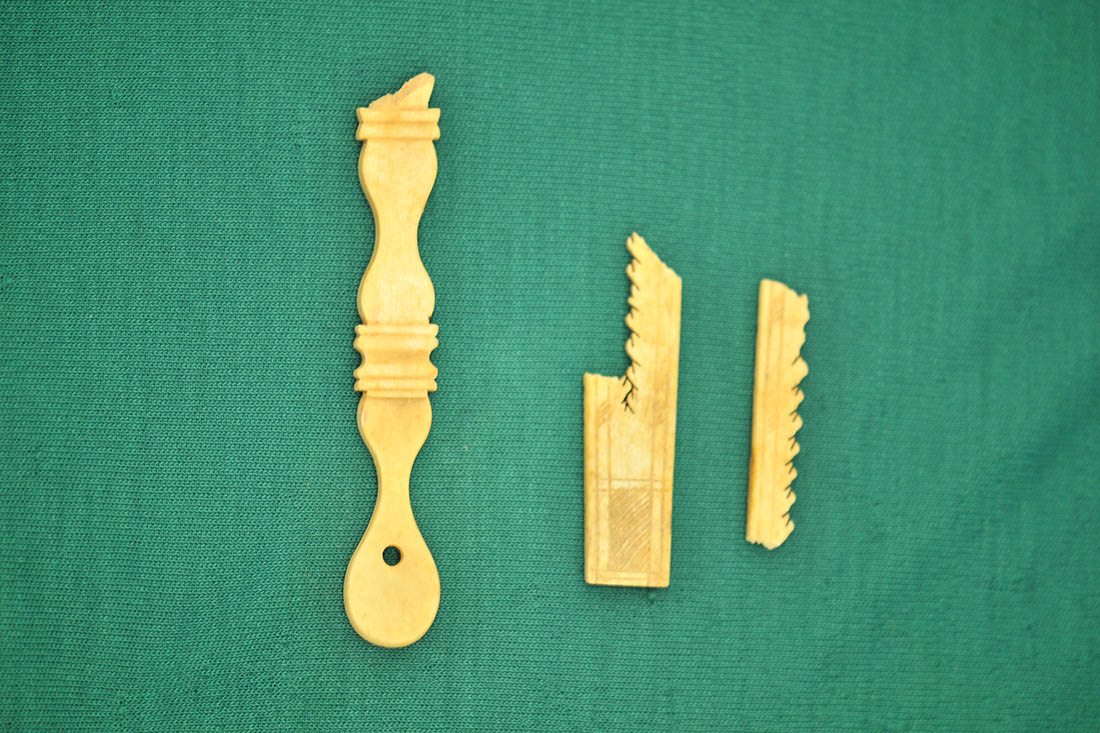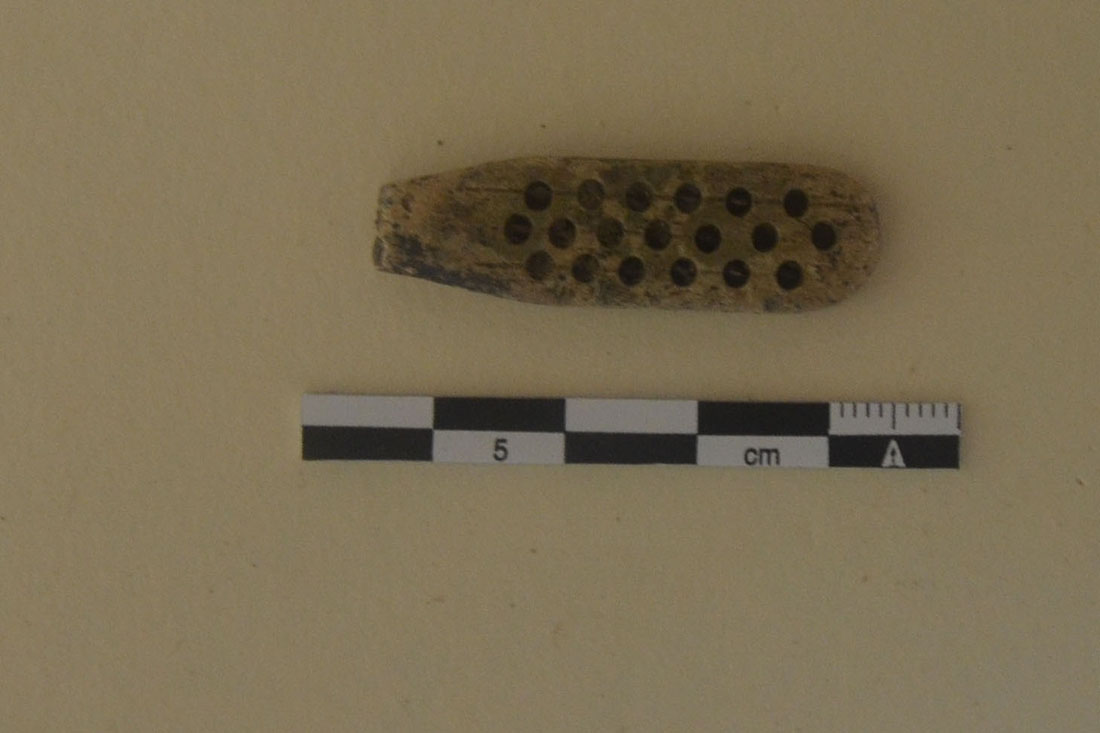By: María del Carmen Alemán Vázquez
What do the studies of pieces in zooarchaeology contribute?
The study of superstructural elements that were part of the spiritual culture in individuals who lived in certain places is of great interest for archeology, which today constitutes a subject of study for specialists interested in inquiring about said content.
The pieces recovered in archaeological sites made from biological material are striking. As they have distinctive characteristics from the rest of those sampled, they require more attention to reveal the enigmas that arise during the work – such as the material that was used, the way it was made and the purpose for which it was made.
For the most part, this zooarchaeological material referred to turns out to be part of the by-product of the diet, such as: cow bones, fish vertebrae, turtle shells, and mollusk shells -which were used to elaborate the most varied objects.
Among these remains we find daily tools such as: earrings, pendants, necklace beads, toothbrushes, combs and hairbrushes, buttons, game tokens, cutlery handles, scrapers, spearheads and hand picks.
All are very important, because since the emergence of human beings, they have needed means and instruments that facilitate their stay on Earth and make their lives more pleasant.
Since time immemorial, bone has been a material used to make countless articles. In archaeological interventions it is common to find pieces associated with this material, and although in different contexts, they have similarities, given the purpose for which they were made.
Sites studied that stand out for the presence of superstructural elements
The Archeology group of the Investigations Subdirectorate of the Office of the Historian of Camagüey City (OHCC), this topic is not alien to it, since it is familiar to find creations from bone remains in each excavation. In this case, we specifically refer to pieces recovered in Pueblo Viejo de Nuevitas, in the old Habana Hotel -located in the central Cisneros street- and in the old convent hospital of San Juan de Dios.
Pueblo Viejo de Nuevitas, a place known as the first settlement of Santa María del Puerto del Príncipe, was intervened in March 2012. The archaeological material exhumed suggests an early and sustained occupation of the space from the first half of the 16th century to the same period of the 20th century. Other hypotheses manage the survival of marked indigenous cultural elements until the 18th century and the beginning of the 19th.
From this place, a group of pieces made for utilitarian purposes were quantified, such as: necklace beads made with bony fish vertebrae, scrapers made from bivalve molluscs, hand picks made from conch, pendants made from molluscs, and buttons of cow bones.
Another of the places studied was the second cloister of the Convent of San Juan de Dios, in the historic center of Camagüey city. An excavation was carried out there in November 2012. Ceramic material of different types was found among the classified, corresponding to the 17th to 19th centuries.
With respect to the elaborations in bones, several exponents appeared such as spinning spindle, toothbrush, cutlery handle, fan piece, fish vertebrae necklace beads, cow bone buttons that stand out when appearing with one, two, four and five holes.
Several excavation campaigns were carried out at the Habana Hotel site from 2008 to 2016, and several pieces made from bones were recovered.
This has been an analysis resulting from the work carried out by specialists and technicians belonging to the Archeology Group of the OHCC Research Subdirectorate, since many of these objects were discovered during the excavation stage itself; and others during the laboratory work in the processes of identification and classification of the material.
With the development of man, these artifacts have also provided the possibility of discovering cultural patterns of a certain time. Each one of them offers us the most varied information about human activity: from those essential to subsist to those elaborated for luxurious and decorative purposes.
Translated by: Aileen Álvarez García

